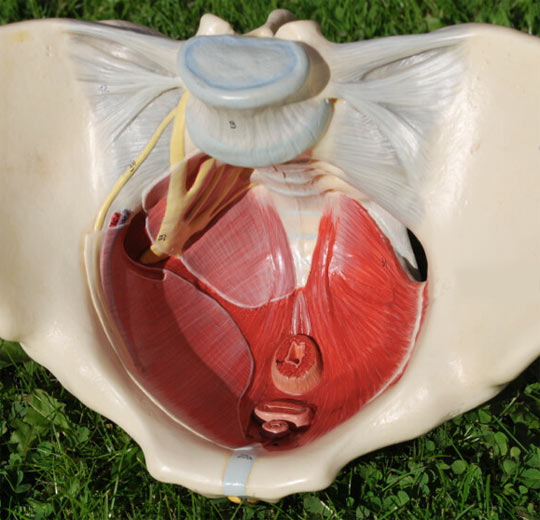Introduction
This newsletter we are bringing you a great article on pelvic floor health from Peta Titter, a PAA Principal instructor who is President of the Continence Foundation of Tasmania. Peta is also a continence nurse advisor and founder of the Women’s Health Education Network.
The Continence Foundation is one of several organisations in Australia dedicated to education and exercise guidelines for Women’s Health. As Pilates instructors, we deal with a complex array of physiological issues. It is crucial that we seek advice from specialist health professionals when needed and that we stay up to date with National Guidelines on the many complex conditions that present to us.
Chris Lavelle
PAA Vice President

The role of the Pilates instructor in pelvic floor education
In my first ever Pilates lesson, I was introduced to pelvic floor work, and admittedly, I found it very confusing. Despite being an experienced intensive care nurse and having placed many urinary catheters on patients, I’d never really understood what exercising my own pelvic floor felt like. I remember leaving that first Pilates lesson and feeling very disheartened. I struggled to feel the pelvic floor exercise and found the exercise instruction so complex that I felt there was no way I would ever ‘get it.’ That experience led me to train as a continence nurse advisor and I have since become the president of the Tasmanian branch of the Continence Foundation of Australia. From this role, and from my experience as a principal Pilates instructor, I would like to share with you my thoughts around the role of the Pilates instructor in pelvic floor education.
In an ideal world, it would be great if all individuals could be assessed and educated by a continence professional. For many reasons, this is not always possible, whether it be lack of awareness, limited services, long waiting periods or lack of resources.
This is where the Pilates instructor is invaluable, especially when lack of knowledge is the prime issue. We are perfectly placed to promote awareness of pelvic floor health. All Pilates instructors should have an awareness of the anatomy of the pelvic floor, recognising its important role as the base of your core. Generally, talking to clients about the importance of performing pelvic floor work outside of the studio as stand-alone exercises should be a vital role of a Pilates instructor.
Pelvic floor work is vital through all periods of both men and women’s lives. In some cases, women are first introduced to the concept of the pelvic floor when they become pregnant. Pelvic floor work is safe throughout pregnancy and recommended, unless assessed by a health professional and advised otherwise. In the majority of cases, women are aware of pelvic floor health during this period of their life, but once their children are out of the baby phase they get busy, and it’s not a priority. As Pilates instructors, we can be instrumental in keeping pelvic floor health in the forefront of their minds.
Scope of Practice
It is outside our scope of practice to instruct correct pelvic floor technique unless you have further education and training in this field outside of standard Pilates training.
Research has found that pelvic floor exercises are effective under the correct instruction. As Pilates instructors, we are not taught how to provide specific correct pelvic floor exercise instruction or how to assess for dysfunction.
This should not put us off encouraging pelvic floor work, but we should also not be giving specialist advice if we do not have the background training. There is a small subset of the population that do have an overactive pelvic floor, and conventional exercises are not appropriate for them, but they need to be assessed by a trained professional in pelvic floor health. For clients who you identify might need assessment or require a greater depth of education, knowing who you can refer to in your area is important.
If you have concerns, refer them to a professional who is properly trained for specialist advice. Find your local women’s health physiotherapist, gynaecologist/obstetrician, GP, and/or continence nurse advisors. In most areas, there will be a government run continence service. Of course, there is always the
Continence Foundation of Australia.
Build a relationship with these professionals, invite them into your studio, and/or ask if there are any pamphlets they would like to be displayed. Ensure your clients are getting the right information and the care that they deserve.
Please feel free to get in contact with me for further resources.
Peta Titter
President of the Continence Foundation of Tasmania
Continence nurse advisor
Principal Pilates instructor.
Founder Women’s Health Education Network

Comments are closed.